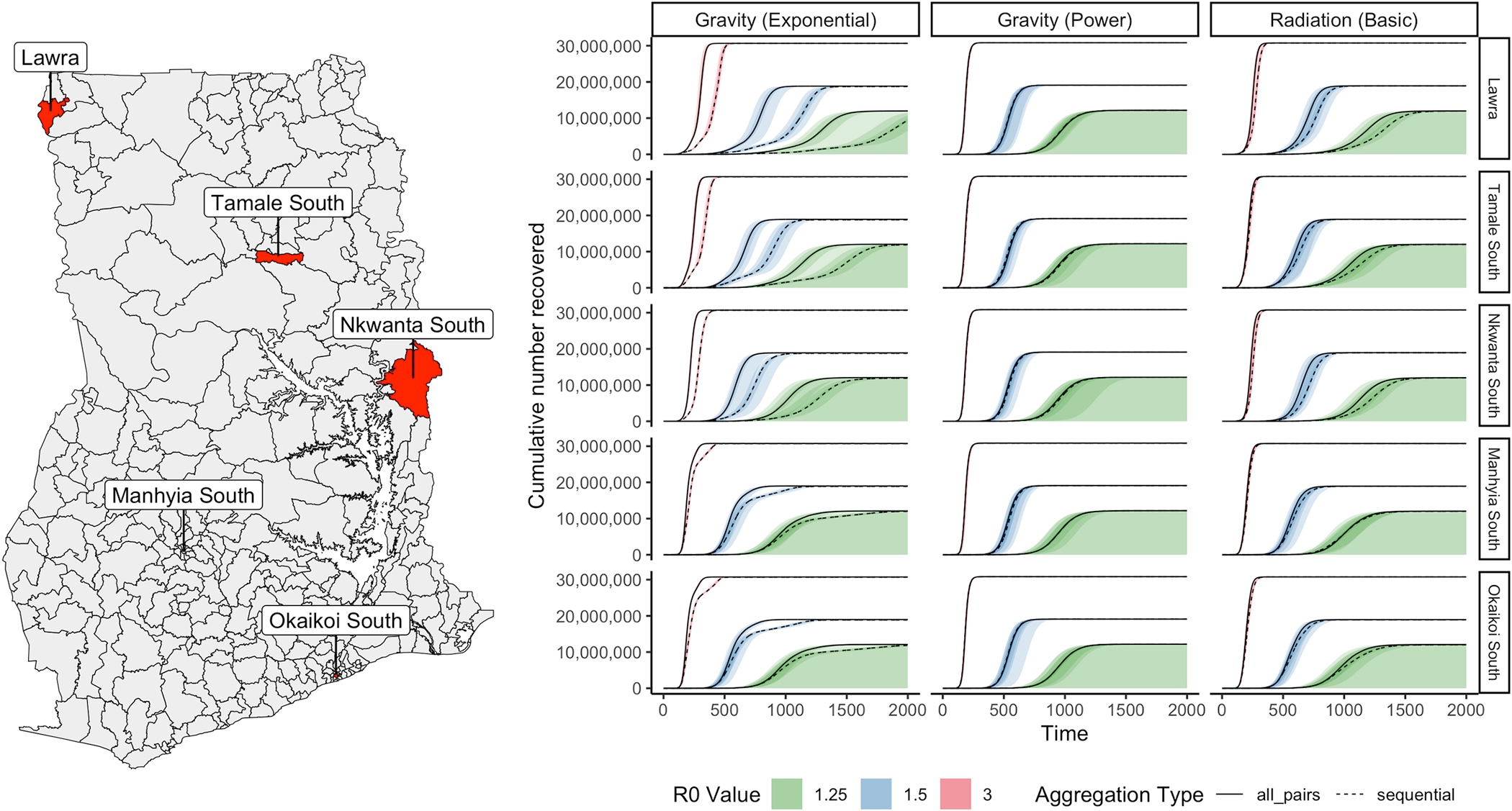Authors: Hamish Gibbs, Anwar Musah, Omar Seidu, William Ampofo, Franklin Asiedu-Bekoe, Jonathan Gray, Wole A. Adewole, James Cheshire, Michael Marks, Rosalind M. Eggo
Published: August, 2023 in PLOS Computational Biology

Abstract
This paper demonstrates how two different methods used to calculate population-level mobility from Call Detail Records (CDR) produce varying predictions of the spread of epidemics informed by these data. Our findings are based on one CDR dataset describing inter-district movement in Ghana in 2021, produced using two different aggregation methodologies. One methodology, “all pairs,” is designed to retain long distance network connections while the other, “sequential” methodology is designed to accurately reflect the volume of travel between locations. We show how the choice of methodology feeds through models of human mobility to the predictions of a metapopulation SEIR model of disease transmission. We also show that this impact varies depending on the location of pathogen introduction and the transmissibility of infections. For central locations or highly transmissible diseases, we do not observe significant differences between aggregation methodologies on the predicted spread of disease. For less transmissible diseases or those introduced into remote locations, we find that the choice of aggregation methodology influences the speed of spatial spread as well as the size of the peak number of infections in individual districts. Our findings can help researchers and users of epidemiological models to understand how methodological choices at the level of model inputs may influence the results of models of infectious disease transmission, as well as the circumstances in which these choices do not alter model predictions.
Cite
@article{gibbs_call_2023,
title = {Call detail record aggregation methodology impacts infectious disease models informed by human mobility},
volume = {19},
issn = {1553-7358},
url = {https://journals.plos.org/ploscompbiol/article?id=10.1371/journal.pcbi.1011368},
doi = {10.1371/journal.pcbi.1011368},
abstract = {This paper demonstrates how two different methods used to calculate population-level mobility from Call Detail Records ({CDR}) produce varying predictions of the spread of epidemics informed by these data. Our findings are based on one {CDR} dataset describing inter-district movement in Ghana in 2021, produced using two different aggregation methodologies. One methodology, “all pairs,” is designed to retain long distance network connections while the other, “sequential” methodology is designed to accurately reflect the volume of travel between locations. We show how the choice of methodology feeds through models of human mobility to the predictions of a metapopulation {SEIR} model of disease transmission. We also show that this impact varies depending on the location of pathogen introduction and the transmissibility of infections. For central locations or highly transmissible diseases, we do not observe significant differences between aggregation methodologies on the predicted spread of disease. For less transmissible diseases or those introduced into remote locations, we find that the choice of aggregation methodology influences the speed of spatial spread as well as the size of the peak number of infections in individual districts. Our findings can help researchers and users of epidemiological models to understand how methodological choices at the level of model inputs may influence the results of models of infectious disease transmission, as well as the circumstances in which these choices do not alter model predictions.},
pages = {e1011368},
number = {8},
journaltitle = {{PLOS} Computational Biology},
shortjournal = {{PLOS} Computational Biology},
author = {Gibbs, Hamish and Musah, Anwar and Seidu, Omar and Ampofo, William and Asiedu-Bekoe, Franklin and Gray, Jonathan and Adewole, Wole A. and Cheshire, James and Marks, Michael and Eggo, Rosalind M.},
urldate = {2023-09-01},
date = {2023-08-10},
langid = {english},
note = {Publisher: Public Library of Science},
keywords = {Human mobility, Network analysis, Telecommunications, Infectious disease epidemiology, Spatial epidemiology, Ghana, Population mobility, Epidemiological methods and statistics},
file = {Full Text PDF:/Users/hamishgibbs/Zotero/storage/R4WCGI8C/Gibbs et al. - 2023 - Call detail record aggregation methodology impacts.pdf:application/pdf},
}